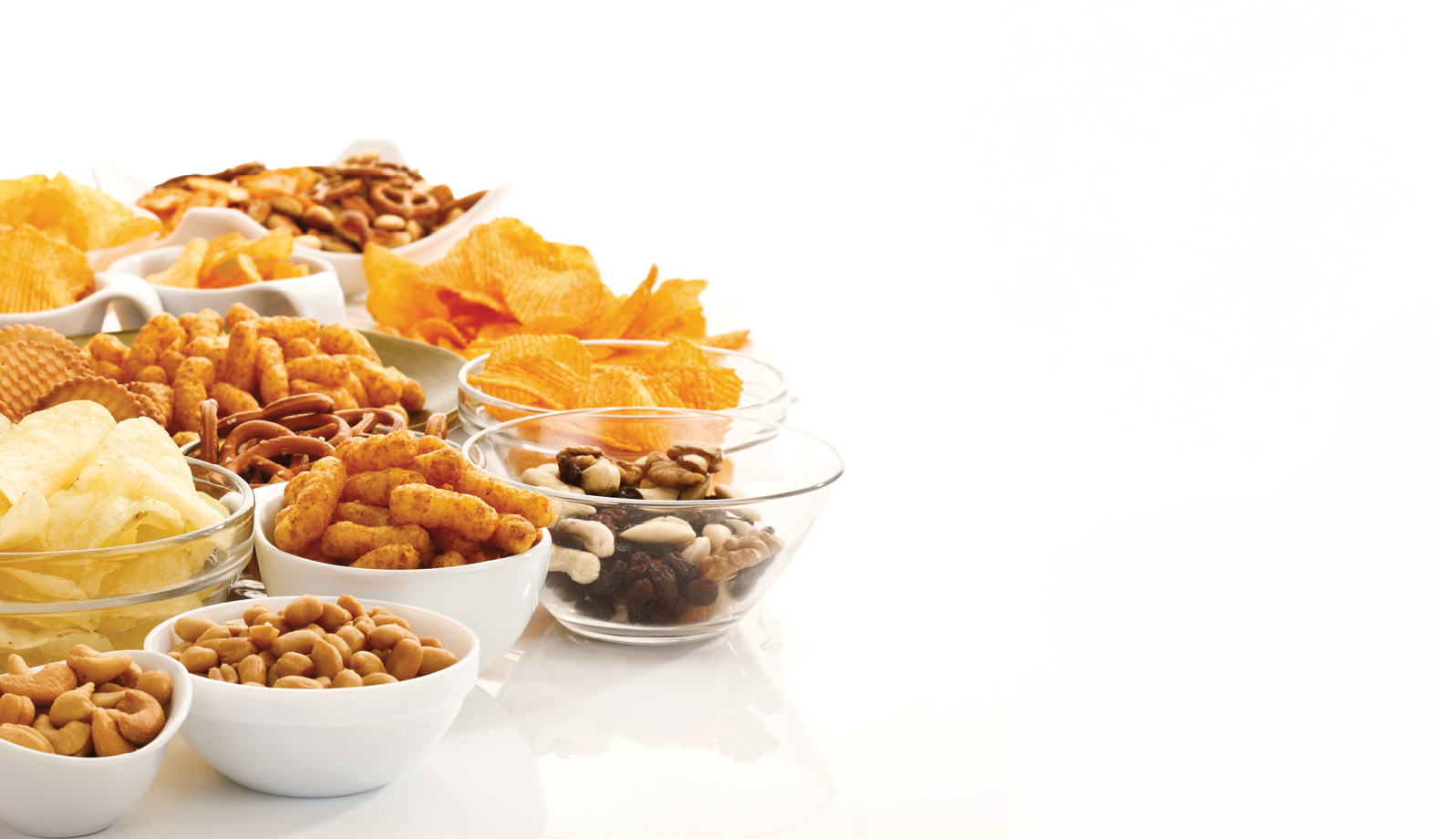You probably have a general sense that snacks, like most things in the American diet, have been supersized—but you may not realize by how much. A data analysis of surveys from more than 23,000 Americans who participated in the National Health and Nutrition Examination Survey found that they were getting nearly one-quarter of their total daily energy intake—400 to 500 calories—from snacks. The survey asked each participant to make note of what he/she eats over a 24-hour period. Even though this may not necessarily reflect how people eat on a regular basis (it could have been taken on a day when some had wine or birthday cake), it gives researchers a good snapshot of the diets of a large number of people.
What this analysis tells us: Snacks contribute the equivalent of a meal’s worth of food to our diet but without the nutritional value of a well-balanced meal. Snacks generally are made up of fat and carbohydrates without much protein or fruit and rarely a vegetable. Survey participants who were managing type 2 diabetes did eat fewer sugary foods and snacked less overall than participants who did not have diabetes, but they weren’t necessarily taking in needed nutrients.
Why the disconnect? When sitting down to a meal, you have an idea of what you’ll eat—maybe yogurt and fruit for breakfast…a salad with chicken at lunch…and salmon and sides for dinner. But snacks have become a string of small eating episodes, generally unplanned and unconnected. If you went to a restaurant and the menu consisted of a typical day’s worth of snacks, you’d be appalled—granola bar, chips, muffin top, cheese wedge. Add to this all the beverages we’re drinking as snacks, from coffee drinks to sweet tea to afternoon cocktails. The problem isn’t how to stop snacking but how to snack better. Here’s what to do…
Keep a food log. This lets you see clearly what you’re eating and where you have nutrition gaps that could be filled at snack time. Important: Simply cutting back or cutting out low-nutrient foods is only half the solution. You need to replace those added sugars and refined grains, for example, with fruits, vegetables and whole grains. Also keep track of the circumstances around each snack—perhaps you snack during the afternoons at your desk, when you’re traveling or when you are under stress. When you see a pattern, you’ll know when to plan ahead.
Use snacks to your advantage. Snacks can play an important role by filling in a nutrient gap if you’re very active and have high energy needs…if you’re in the habit of eating smaller meals…or you are battling sarcopenia (age-related muscle loss) and need protein-rich snacks such as hummus and vegetables or fruit with cottage cheese or yogurt. If you need to satisfy hunger but don’t need extra calories that could lead to obesity and chronic disease, focus on just fruit and vegetables.
Shop smarter. Use your food log to inform your food shopping. If you notice you’re not eating leafy greens or blueberries on a regular basis, put them on your grocery list. Snacks can fill your nutrition needs only if they’re in your kitchen. That means thinking about them when you shop, just as you focus on the ingredients for meals. If you don’t bring salty snack foods into your home, they won’t be available to eat…and if you don’t bring in fruits and vegetables, they won’t be available either.
Prep once…eat twice. Sometimes it’s not buying healthy snacks but rather prepping them that’s the problem. Create opportunities for easier snacking. When cutting up vegetables for dinner, cut up an extra carrot and red pepper to put in a container in the fridge for a snack. Cut up that pineapple as soon as you get it home rather than leaving it whole on the counter.

